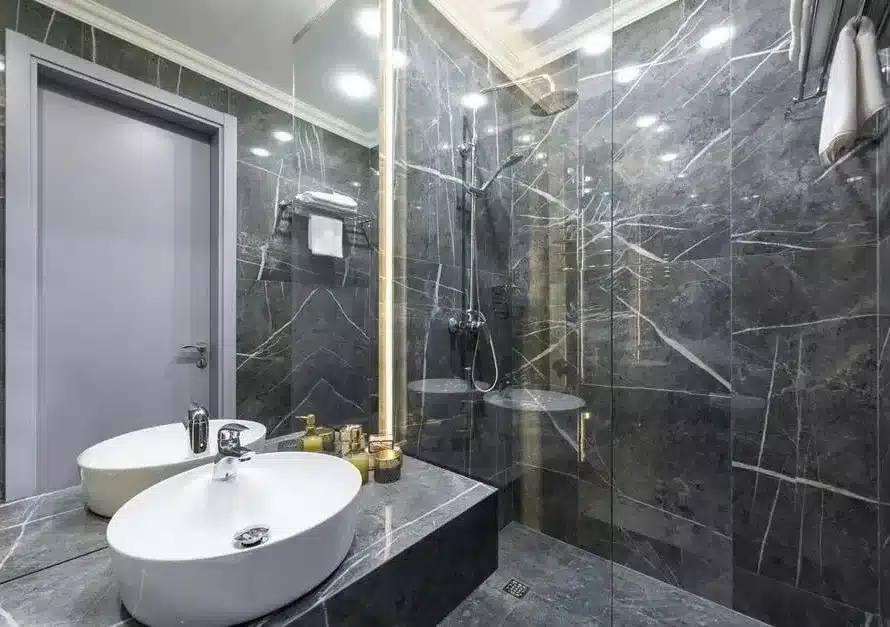Imagine stepping onto your wood floor in the chill of winter and feeling a warm, comforting embrace. This isn’t just a cozy dream. It’s a reality achievable with proper subfloor installation. So… what do you need to know about this process?
Today we’re diving into the details and giving you some essential tips for insulating under your wood floor. You’ll be able to turn a common oversight into your home’s energy-saving superhero.

Understanding Subfloor Insulation
Subfloor insulation plays a big role in keeping your home comfortable and energy efficient. It helps maintain the temperature inside, so you’re not using too much heat in the winter or overworking your air conditioner in the summer. This can lead to lower energy bills and a happier living environment.
There are different materials you can use for subfloor insulation, each with its own set of benefits. For example, some materials are better at keeping moisture away, while others are known for their durability and ability to keep heat in.
Choosing the right type depends on your home’s specific needs and what you’re looking to get out of the insulation.
When thinking about installing subfloor insulation, it’s important to consider the overall impact it will have. Not only does it contribute to a more stable temperature throughout your home, but it also plays a part in reducing noise levels.
This means less sound from footsteps or conversations traveling through the floors. Plus, by keeping your floors warmer in the colder months and cooler in the warmer months, you’re adding an extra layer of comfort to your daily life.
Pre-Installation Considerations
One of the first things to do is check the moisture level in the area where you’re planning to install the insulation. Moisture can be a big problem for floors because it can lead to mold, rot, and other damage.
There are tools you can use to measure moisture levels, or you can have a professional do it. If you find there’s a lot of moisture, you might need to fix that problem before going ahead with the insulation. This might mean installing a vapor barrier or improving drainage around your home.
Evaluating Your Current Subfloor
Next, take a good look at your current subfloor. You’re checking for any signs of damage, like cracks, mold, or areas that feel weaker than others. If you find problems, you’ll need to decide whether to fix them or replace parts of the subfloor before adding insulation.
This step is important because putting new insulation over a damaged subfloor can hide problems that will only get worse over time.
Handling moisture and checking the condition of your subfloor are key steps in preparing for insulation. They help protect your home from damage and make sure your insulation does its job well. The goal is to improve your home’s comfort and energy efficiency, and taking care of these issues first sets you up for success.
Choosing Your Insulation and Subfloor Materials
Subfloor panels and insulation materials come in various types. Some materials are better at stopping heat from escaping, which is perfect for colder climates. Others might be more focused on keeping moisture out, which is great in areas where dampness is a concern.
It’s important to look at all your options and consider what matters most for your home. You might also want to think about how easy the materials are to install and how long they’re expected to last.
Factors Influencing Subfloor Installation Cost
The cost of installing a subfloor can vary a lot. It depends on the materials you choose, the size of your space, and whether you need to fix any issues before you can start. Labor costs can also play a big part, especially if you hire professionals to do the job.
Remember, trying to save money by choosing cheaper materials might not always be the best choice in the long run. Investing in quality insulation and panels can lead to bigger savings on your energy bills and less need for repairs down the line.
Subfloor Installation
Installing subfloor insulation and panels is a step-by-step process that can make a big difference in your home’s comfort and energy efficiency. Let’s walk through what this involves.
Preparing Your Floor
Before you start laying down any insulation or panels, you need to prepare your floor. This means cleaning the area thoroughly to remove any debris, dust, or old flooring materials that might be in the way.
It’s also important to make sure that the floor is level. An uneven floor can lead to problems later, like gaps in the insulation or panels not fitting right. You can use a variety of tools and materials to level the floor, such as concrete for low spots or sanding down high spots.
Installing the Insulation Layer
Once your floor is ready, the next step is to install the insulation layer. This involves rolling out or laying down the insulation material you’ve chosen across the subfloor area.
It’s important to cover the entire space evenly and to cut the insulation to fit any odd shapes or corners in your room. If your insulation requires it, you might also need to tape seams or secure the insulation in place with staples or adhesive.
Installing the Subfloor Panels
After the insulation is in place, you’re ready to install the subfloor panels. Start at one corner of the room and lay the panels down one at a time, making sure they fit snugly together.
You might need to cut panels to fit around edges or corners. It’s usually best to stagger the seams of the panels, much like laying bricks, to add strength and stability to the flooring.
Once all the panels are down, you can secure them with screws or nails, following the manufacturer’s instructions for the best results.
Installing insulation and subfloor panels might seem like a big project, but with the right preparation and steps, it’s something that can greatly improve your home. Not only does it add an extra layer of insulation, but it also creates a solid foundation for your final flooring.
Finishing and Maintenance Tips
Once you’ve installed your subfloor insulation and panels, there are a few more steps to make sure everything is sealed up and protected. This will help keep your floors in good shape.
Sealing and Protecting Your Subfloor
Sealing the seams between subfloor panels is an important step. This can be done with a special tape or sealant designed for this purpose. It helps prevent moisture from getting into the seams and causing damage over time.
Also, if you’re dealing with a particularly damp area or want extra protection, you might consider applying a waterproofing layer on top of the subfloor. This can be especially helpful in basements or ground-level floors where moisture is more likely to be an issue.
Long-term Maintenance of Insulated Subfloors
Taking care of your subfloor doesn’t stop after installation. Regular checks for moisture, especially in areas prone to leaks or flooding, can prevent major damage.
If you notice any signs of moisture, addressing it quickly is key. Also, keep an eye on the overall condition of your floor. If you hear creaking sounds or notice areas that feel softer when you walk on them, it might be time to inspect the subfloor and insulation for any issues.
Routine maintenance checks can go a long way in keeping your floors strong and insulated.
Keeping your subfloor in good condition requires a bit of effort, but it’s worth it. Proper sealing, protection, and regular maintenance will ensure that your floors remain comfortable, energy-efficient, and free of moisture problems. This not only helps you enjoy your home more but also protects your investment in your flooring and insulation.
Additional Considerations
Choosing the right materials for your subfloor insulation can also impact the air quality inside your home. Some insulation materials release low levels of chemicals into the air, known as volatile organic compounds (VOCs).
These can affect people’s health, especially if someone has asthma or allergies. Look for insulation and sealing products that have low VOC levels. This way, you can keep your home’s air clean and safe for everyone.
The Importance of Professional Assessment
While many parts of installing subfloor insulation might seem like something you can do on your own, getting a professional assessment can be very helpful. A professional can spot things you might miss. This could include things like areas that need more attention to moisture or uneven floors that could cause problems later.
They can also give advice on the best materials for your specific situation. Even if you decide to do the work yourself, a professional opinion can guide you to make sure your insulation is as effective as possible.

Keeping Your Floors Comfortable and Efficient

Compare Quotes from Top-rated Flooring contractors in your area.
Proper subfloor installation and insulation are key to enhancing your home’s comfort and energy efficiency. By choosing the right materials, preparing thoroughly, and maintaining your subfloor, you create a solid foundation for a warm, efficient home.
Not sure where to start? Alpha Living can instantly pair you with top-rated flooring contractors so you can compare options and save. Enter your zip here to find top-rated flooring pros in your area and get free quotes!





Facebook
Comments